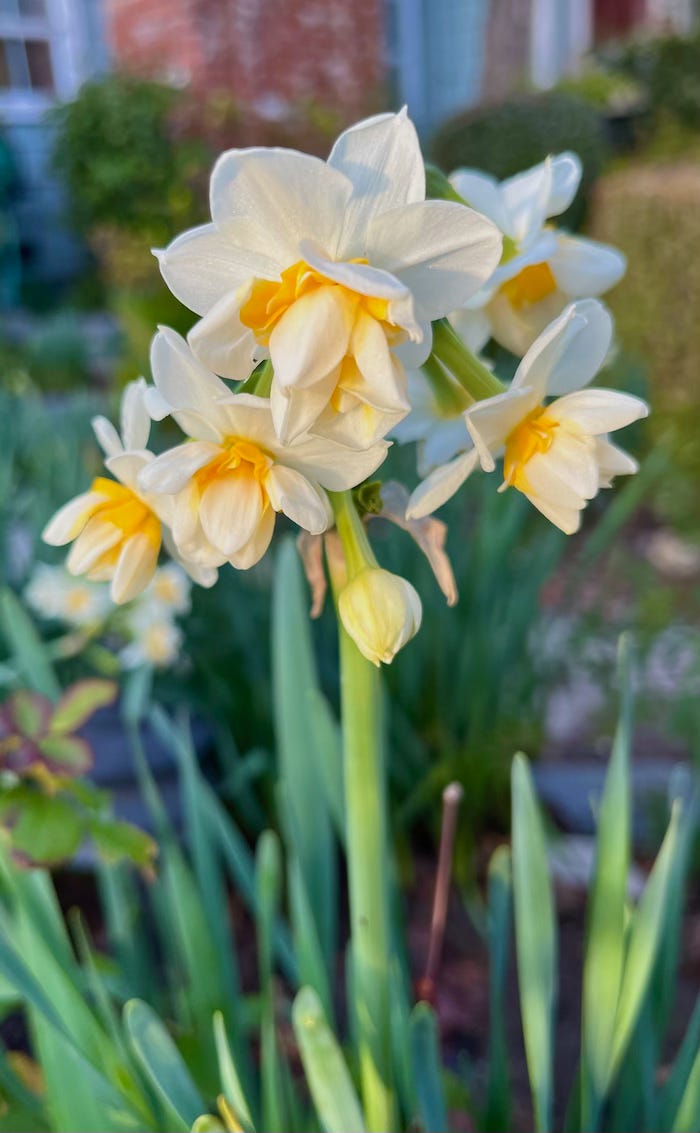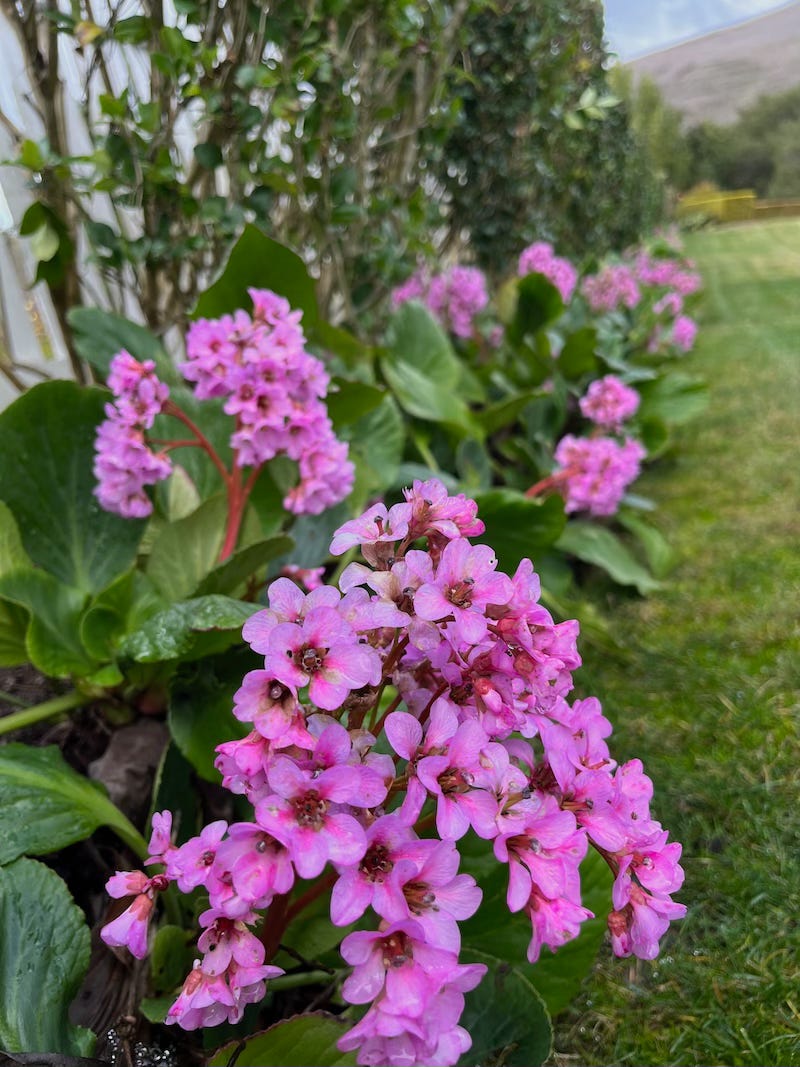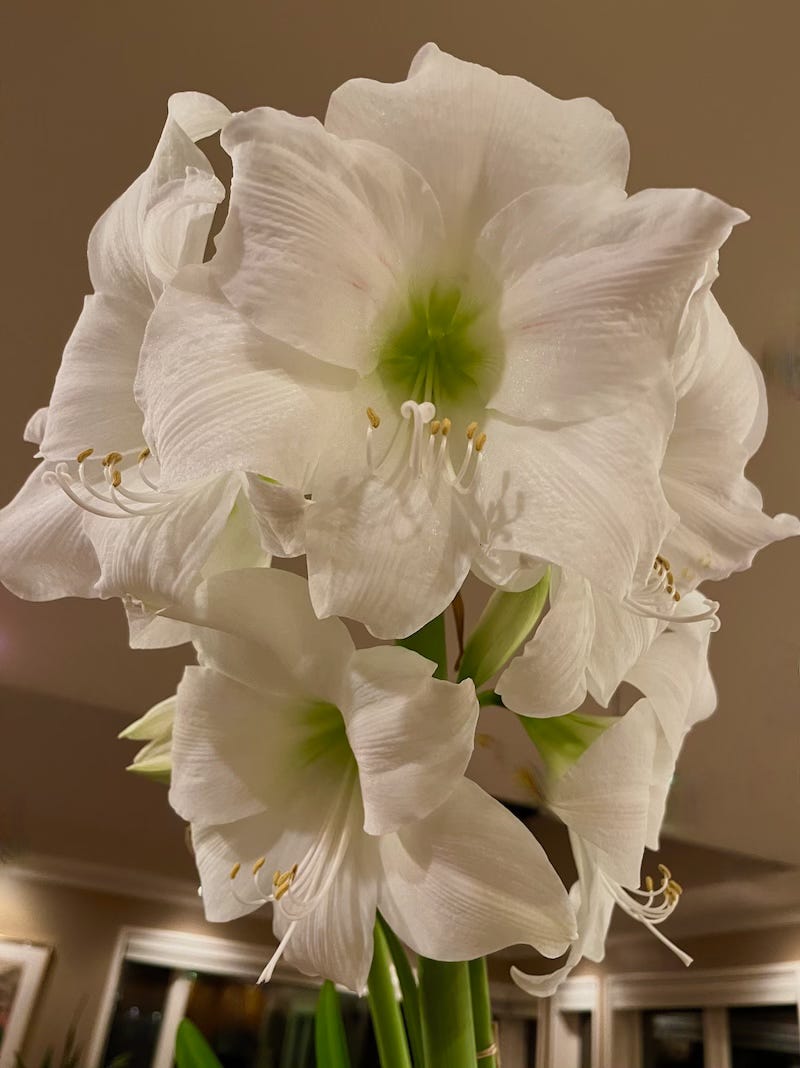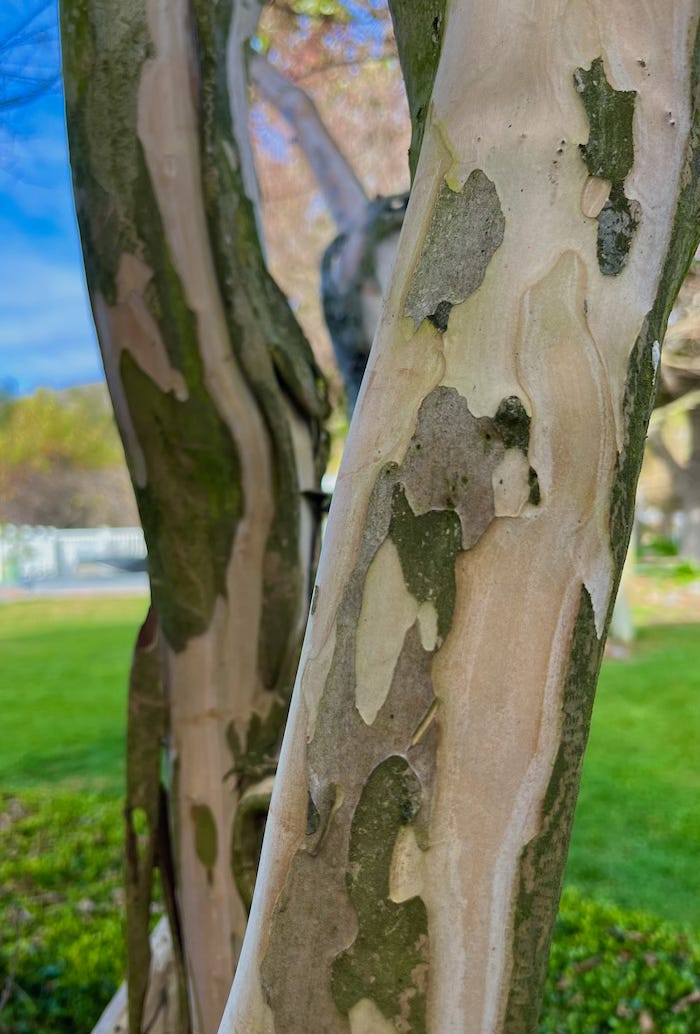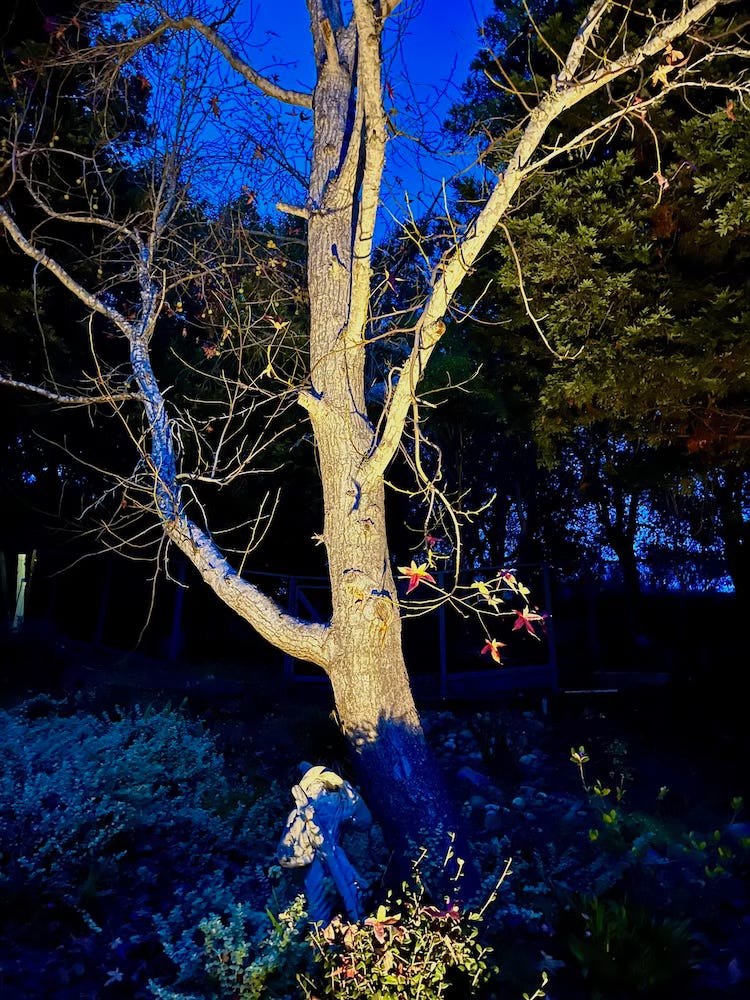Sometimes in the winds of change, we find our true direction.
~ Source Unknown
Thus far, January has indeed been a windy month. Optimism is my true direction.
The vernal equinox is still two months away, yet my jonquils are already perfuming my landscape. Daffodils are a symbol of rebirth and usually begin to bloom in March. All jonquils are daffodils (Narcissus jonquilla), yet not all daffodils are jonquils. Since winter is my least favorite season, my optimism soars as I stroll through my garden witnessing these adaptable narcissi stretching their yellow and cream petals to the sky whilst most of my garden sleeps.
My bright pink Bergenia with large, glossy leaves that resemble elephant ears has been blooming for over a month, lining the edges of beds in front of the privets and along the lawn. I count on Bergenia to brighten the garden throughout the drabness of winter. Bergenia is easy to propagate by dividing the roots. Bergenia’s unflattering name is “pig squeak” because of the sound the leaves make when rubbed together.
The 2024 Garden Media Garden Trends Report shares information to enhance garden customer experiences and shape winning new products. The theme for 2024 is Eco-Optimism. The growing awareness of our global climate’s volatility has increased the number of people planting for pollinators. Without birds, butterflies, bats, bees, and other pollinators, we wouldn’t have the foods, medicines, beverages, or spices that we need for healthy living. Since pollinator populations have been declining, we must plant to improve their habitat, refrain from using pesticides, and explore methods to be organic. Since 2019, the number of people purchasing native plants has doubled. Native plants are specimens that are region-specific, and adaptable to the soil and climate where they naturally grow. We must also garden for wildlife to ensure the viability of our landscapes. One of my apple trees supplies late-harvest tasty treats not only for my family and friends, but also for the birds, bees, squirrels, raccoons, foxes, rabbits, and other creatures that frequent the orchard.
The United Nations projects that by the year 2050, 89% of people will be living in urban areas. Container gardening increased by 200% in 2022 and as people move to smaller spaces, demand for container gardening will continue. Bring a pot of amaryllis into the house and watch the blooms unfold.
Hanging gardens will be a trend for 2024 while edible gardens are all the rage. In addition to herbs and vegetables, I am cultivating mustard greens which are harvested young to be added to salads or steamed as a vegetable
.Trees of the future is a theme as we save our vital canopies. As people learn more about the benefits of trees, they will want to plant specimens that will enhance their spaces while also providing shade for humans and a habitat for wildlife. Trees will be up-lit to add drama to the night garden. In the past few months, I have reinstated landscape lighting to showcase the architecture of my trees. A favorite tree for our environment is the crape myrtle. Crape myrtles offer four seasons of splendor, including breathtaking bark in winter. Birds and hummingbirds flock to my trees.
By reusing and repurposing many home products, we will neutralize our carbon footprints. The vivid, wild, and powerful color of the year is called cyber lime. This is a hyper-bright green that signifies the connection between nature and technology.
I see it in the new leaves on my sage plants, and naturally on my lemon and lime trees. According to the Garden Trends Report, cyber lime is gender-inclusive, fashionable, and complements most colors. It looks terrific in combination with purple, pink, orange, yellow, white, and other neon. The color “green” echoes nature and will continue to work in harmony with interior décor, stimulating and energizing our body, mind, and spirit. You’ll find this bold lime hue in many indoor and outdoor plants including hellebores, heuchera, spirea, echinacea, hydrangea, zinnia, pothos, philodendron, lemongrass, mint, coleus, potato vine, and many more.
Though its bracts are a gorgeous lime green, one plant that I don’t recommend because it is terribly invasive is euphorbia, also called leafy spurge. Its root system spreads rapidly and produces a chemical that stops other plants from growing. The leaf’s milky juice irritates the skin. Leafy spurge was introduced from Europe as a garden plant, but it has now escaped into hills, fields, roadsides, and my orchard. What began with a single specimen in my landscape exploded to cover a hillside and kill the growing natives. I have been working to eradicate it from my land for at least two decades. It is a noxious weed to be avoided.
Let’s be eco-optimists in 2024 and assist the winds of change to help us find our true direction.
Happy Gardening. Happy Growing.
Read Lamorinda Weekly: https://www.lamorindaweekly.com/archive/issue1724/Digging-Deep-with-Goddess-Gardener-Cynthia-Brian-2024-Garden-Trends-Part-2.html
Press Pass: https://www.vapresspass.com/2024/01/18/2024-garden-trends-part-2/
For more gardening advice for all seasons, check out Growing with the Goddess Gardener at https://www.CynthiaBrian.com/books. Raised in the vineyards of Napa County, Cynthia Brian is a New York Times best-selling author, actor, radio personality, speaker, media and writing coach as well as the Founder and Executive Director of Be the Star You Are!® 501 c3. Tune into Cynthia’s StarStyle® Radio Broadcast at www.StarStyleRadio.com. Her newest children’s picture book, Family Forever, from the series, Stella Bella’s Barnyard Adventures is available now at https://www.CynthiaBrian.com/online-store. Hire Cynthia for writing projects, garden consults, and inspirational lectures. Cynthia@GoddessGardener.com





